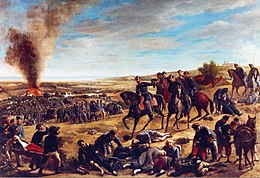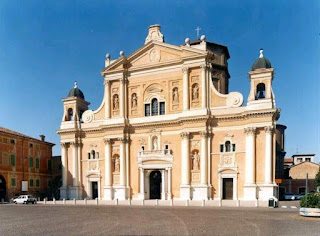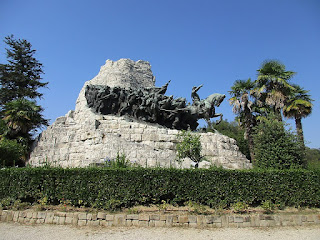The day the Pope had to slip out of the side door of his palace
 |
| Pope Pius IX fled Rome in the face of a revolutionary uprising |
It was an unwelcome change of circumstances for Pius IX, who had enjoyed great popularity since being elected as Pope two years before. But the day before his escape from Rome, he had found himself besieged inside his palace by an unruly mob that had gathered in Piazza del Quirinale.
Revolutionary fever had been whipped up and the city was in turmoil following the murder of Count Pellegrino Rossi at Palazzo della Cancelleria, the seat of the government of the Papal States in Rome. This event eventually led to the formation of the short-lived Roman Republic.
Rossi had been the Minister of the Interior in Pope Pius IX’s government and had been responsible for a programme of unpopular reforms, which gave only the well-off the right to vote and did nothing to address economic and social issues. Street violence was being stirred up by secret societies, such as Giuseppe Mazzini’s Young Italy movement, and Rossi had been declared an enemy of the people by revolutionaries.
There was also anger because of Pius IX’s decision to withdraw the support of the Papal Army from the First Italian War of Independence, being fought between the Kingdom of Sardinia and the Austrian Empire.
When Rossi had arrived at Palazzo della Cancelleria and was climbing the stairs to the Assembly Hall a few days before, he had been stabbed in the neck by an attacker and killed. This sparked an uprising against the papal government and Pius IX found himself a prisoner inside his own palace.
So, he decided to escape and, with the help of close allies and his personal attendant, the Pope slipped out of Palazzo del Quirinale by a side door in the attire of an ordinary priest. He was able to leave through one of the gates of the city and board a carriage which took him to Gaeta, situated 120km (75 miles) south of Rome, where the King of the Two Sicilies, Ferdinand II, provided him with a refuge.
Pope Pius IX, who was born Giovanni Maria Mastai-Ferretti in Senigallia in Le Marche in 1792, studied theology and was ordained as a priest, working his way up to become Archbishop of Spoleto, and developing a reputation as a Liberal, who visited prisoners in jail and organised programmes for street children.
 |
| Pope Pius IX, pictured three years before he died, was initially a popular figure |
But unification would have meant the end of the Papal States and Pius IX would also have had to back aggression against Austria, another Catholic country. When he revealed that he opposed the campaign for a united Italy, he was regarded by many people as a traitor.
The murder of his chief minister made the Pope realise that Rome was no longer safe for him and so he fled to Gaeta, where he continued papal business from a comfortable distance.
Pius IX ignored all requests for him to return to Rome until a French army had marched on the city in 1849 and taken it from Giuseppe Garibaldi and his army, who had arrived to defend the new republic.
It was not until April 1850 that Pius IX finally returned to Rome and, ignoring Palazzo del Quirinale, he went straight to the Vatican, from where he was to govern the Catholic Church for another 28 years.
He is thought to have had the second longest papal reign since Saint Peter, who, it is believed, was Pope for 37 years, although this cannot be verified.
Pius IX died at the age of 85 in 1878. All his successors to the papacy have followed his example and chosen to live in the Vatican.
 |
| Senigallia's pier, the Rotonda al Mare, sits on the resort's renowned Spiaggia di Velluta |
Senigallia, where Pope Pius IX was born, is a port town on the Adriatic coast in the province of Ancona in Le Marche, which is now a popular seaside resort. It was fought over by opposing sides in the Guelph and Ghibelline wars in the 13th and 14th centuries and in 1503, Cesare Borgia, the son of Pope Alexander VI, carried out a raid on the town to punish disloyal supporters. The port was then ruled by the Della Rovere family and Medici families in turn before being annexed to the papal states. It suffered damage during World War I, was hit by a powerful earthquake in 1930, and during World War II was damaged again. Senigallia has now become popular with holidaymakers because of its soft, sandy beach, known as Spiaggia di Velluta, Velvet Beach. Also notable is Senigallia's circular pier, known as the Rotonda al Mare.
Stay in Senigallia with Hotels.com
 |
| The Palazzo del Quirinale, now the official residence of presidents, used to be the home of the Pope |
The Palazzo del Quirinale in Rome, from which Pope Pius IX fled, was originally built in 1583 by Pope Gregory XIII as a summer residence. It served both as a papal residence and as the offices responsible for the civil government of the Papal States until 1870. When, in 1871, Rome became the capital of the new Kingdom of Italy, the palace became the official residence of the kings of Italy. When the monarchy was abolished in 1946, the Palazzo del Quirinale became the official residence and place of work for the presidents of the Italian Republic. During its history, the palace has housed 30 popes, four kings and 12 presidents.
Find Rome hotels with Expedia
More reading:
The murder of Pellegrino Rossi
Giuseppe Mazzini, journalist and revolutionary
How the Bersaglieri corps became key to completing Italy’s unification
Also on this day:
1472: The birth of sculptor Pietro Torrigiano
1826: The birth of Pinocchio creator Carlo Collodi
1897: The birth of Mafia boss Charles ‘Lucky’ Luciano
1926: The birth of painter Vittorio Miele










.jpg)

.jpeg)

.jpg)



















